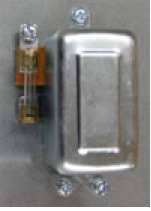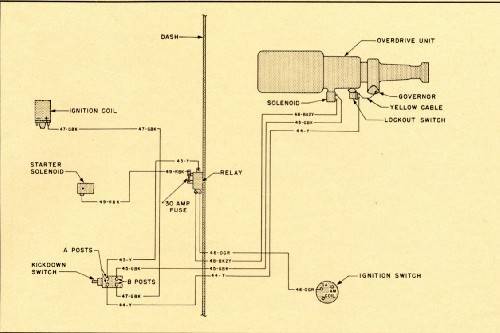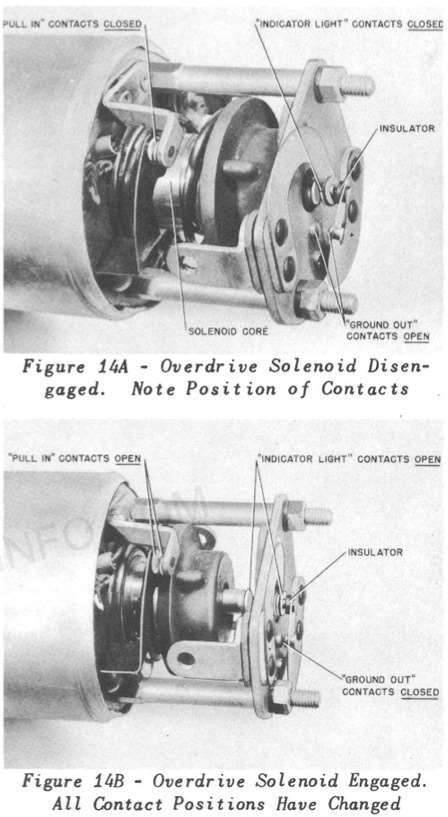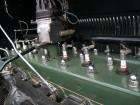|
Re: Bad OD Solenoid?
|
||||
|---|---|---|---|---|
|
Home away from home
|
Also, when reading the trouble shooting guide in the BW manual, it mentions what terminal to ground to test the relay, but my relay doesn't have markings on it anymore.... What is what on this thing?
Posted on: 2013/5/11 17:14
|
|||
|
||||
|
Re: Bad OD Solenoid?
|
||||
|---|---|---|---|---|
|
Forum Ambassador
|
Here is a pictoral layout schematic of the 53 R11. The components are shown as they are on the car which makes it fairly easy to trace the wiring and see where everything goes.
In your case voltage is applied to the relay in two places. From the battery to the fuse in front which does nothing until the relay is energized. To energize the relay you need voltage from ign switch to the dual side post end on the terminal toward the firewall. The ground comes from the governor thru the lockout switch and kickdown switch to the single post on the other side of relay. Once you have those conditions met the relay will energize. Standing still without the governor working you can ground the single end terminal and if ign switch is providing voltage the relay should pull in. The battery voltage from fuse is passed to the solenoid via the dual side terminal end front terminal and to the terminal (4) toward the outside end of the solenoid case. If the solenoid is connected it should clunk when you ground the relay. Typically there are some terminal numbers stamped on the case near the terminal. Clean the dirt and grease and carefully look. Same with relays. Usually stamped on the tab. Not 100% sure on later solenoids but older R11s had a 4 near one and 6 near the other. 4 is coils, 6 is ign cutout contact. The solenoid should read O ohms from the end terminal 4 to ground. There are two coils inside -hold and pullin. The hold coil will read continuity all the time so will be hard to test using a meter unless that coil is open. The other pullin coil will open when the plunger is almost all the way out and a contact inside disconnects it. If that coil or contact is already open solenoid might test good because of the hold coil but solenoid will never pull in. To test the solenoid you need a heavy gauge wire to that end terminal and another to the case. Ordinary light gauge test wires will not carry enough current to let the solenoid pull in.
Posted on: 2013/5/11 18:05
|
|||
|
Howard
|
||||
|
||||
|
Re: Bad OD Solenoid?
|
||||
|---|---|---|---|---|
|
Home away from home
|
Interesting........my relay doesn't of a dual-terminal side..... only one terminal on each side, and one in front, plus the terminal for the fuse.... I'll take a picture real quick..
Posted on: 2013/5/11 18:29
|
|||
|
||||
|
Re: Bad OD Solenoid?
|
||||
|---|---|---|---|---|
|
Home away from home
|
Here is my relay....

Posted on: 2013/5/11 18:34
|
|||
|
||||
|
Re: Bad OD Solenoid?
|
||||
|---|---|---|---|---|
|
Home away from home
|
Never mind, I see now that the one in front, one on the side is the dual.... didn't think that one through... gimme a break its hot out side and I haven't had lunch yet
 LOL!! LOL!!
Posted on: 2013/5/11 18:48
|
|||
|
||||
|
Re: Bad OD Solenoid?
|
||||
|---|---|---|---|---|
|
Forum Ambassador
|
Can't say as I've seen a relay exactly like that one. Here is the typical B-W relay as was used by almost all including Packard. Some were painted black but natural is mostly what I remember.
To test yours, will have to identify the terminals. The one coming from battery should be easy. It should be going to the fuse and have power all the time. The others can be identified one at a time. If you can see all the colors, and they are original wires then it should be doable. The yellow looks obvious so if it's original wire it should be the ground wire coming from governor thru kickdown switch. The other two maybe not so easy. If you can find one that is orange/green then it's from ign switch. If you can't tell, with the key off disconnect the two wires that are left and keep track of where they were. Turn key on and see which wire has power. Once identified, put that wire back on it's terminal. The remaining wire has to be the wire to the solenoid. To test the relay you can ground the yellow?? ground wire as was mentioned above and relay should click. If it does, you can measure the voltage on the remaining terminal and it should have battery voltage when relay is energized. If so, it's on to other parts of the circuit. Attach file:  (10.13 KB) (10.13 KB)
Posted on: 2013/5/11 18:56
|
|||
|
Howard
|
||||
|
||||
|
Re: Bad OD Solenoid?
|
||||
|---|---|---|---|---|
|
Home away from home
|
So I took it off and cleaned the terminals very carefully, the stampings are still visible! Made it pretty easy that way, and the relay does indeed work. That means the culprit has to be the solenoid... I put everything back together so i can drive it around in direct drive til I get a new one..
Posted on: 2013/5/11 21:17
|
|||
|
||||
|
Re: Bad OD Solenoid?
|
||||
|---|---|---|---|---|
|
Forum Ambassador
|
It is possible the pull in coil has burned open but when you have time again, check the contacts inside the solenoid before buying a new one. Those contacts were a service item and might be burned. A cleaning or adjustment could be all that is needed. This is an R9 solenoid so showing an extra set of contacts but the pull in contacts you need to look at on the R11 is very similar.
Posted on: 2013/5/11 21:30
|
|||
|
Howard
|
||||
|
||||
|
Re: Bad OD Solenoid?
|
||||
|---|---|---|---|---|
|
Home away from home
|
Two things I find over and over again on inoperative or intermittent overdrives:
the first is the contacts that Howard just showed. A few strokes of a point file will have them right. When you test one of those solenoids on the bench you about have to use a known good battery and jumper cables unless you have some bodacious good test leads. Plunger should jump out and stay out. The second is that the relay on the firewall may click but because of internal resistance will not pass enough current to push the solenoid out. This is happening a lot now that the cars are 60 years old. My first test is to always to jumper power to the solenoid terminal of the relay. You should hear the solenoid operate. That will tell you if the problem is on the power side or the control side of the system. I say all that because the solenoids are expensive to replace and are seldom bad beyond those dirty contacts Howard pointed out.
Posted on: 2013/5/12 6:14
|
|||
|
||||










